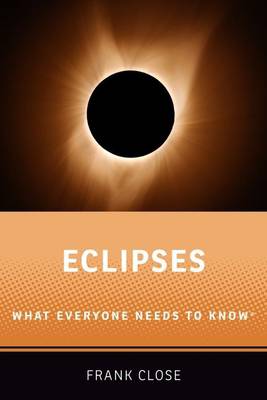
- Retrait gratuit dans votre magasin Club
- 7.000.000 titres dans notre catalogue
- Payer en toute sécurité
- Toujours un magasin près de chez vous
- Retrait gratuit dans votre magasin Club
- 7.000.0000 titres dans notre catalogue
- Payer en toute sécurité
- Toujours un magasin près de chez vous
Description
"Have you ever seen a total solar eclipse?" If the question caused you to search your memory, the correct answer would have been "no." A common response is: "Yes--I saw one, it was about 90% partial eclipse where I lived." A 90% partial eclipse is indeed a remarkable phenomenon, but true totality leaves all else in the shade, in all senses of the phrase. Ask the question of anyone who has experienced the full sensation of being obliterated by the moon's shadow, and they will reply "yes"--without hesitation--and continue with a monologue describing the overwhelming experiences and unique phenomena that ensued.
On 21 August 2017 millions of people across the United States witnessed "The Great American Eclipse" of the Sun. The moment it was over, people around the world were asking questions: what caused the weird shadows and colors in the build up to totality? Were those ephemeral bands of shadows gliding across the ground in the seconds before totality real or an optical illusion? Why this, what that, but above all: where and when can I see a total solar eclipse again?
Eclipses: What Everyone Needs to Know helps explain the profound differences between a 99.99% partial eclipse and true totality, and inform readers how to experience this most beautiful natural phenomenon successfully. It covers eclipses of sun, moon, and other astronomical objects, and their applications in science, as well as their role in history, literature, and myth. It describes the phenomena to expect at a solar eclipse and the best ways to record them--by camera, video, or by simple handmade experiments. The book covers the timetable of upcoming eclipses, where the best locations will be to see them, and the opportunities for using them as vehicles for inspiration and education.
As a veteran of seven total solar eclipses, physicist Frank Close is an expert both on the theory and practice of eclipses. Eclipses: What Everyone Needs to Know is a popular source of information on the physics of eclipses.
On 21 August 2017 millions of people across the United States witnessed "The Great American Eclipse" of the Sun. The moment it was over, people around the world were asking questions: what caused the weird shadows and colors in the build up to totality? Were those ephemeral bands of shadows gliding across the ground in the seconds before totality real or an optical illusion? Why this, what that, but above all: where and when can I see a total solar eclipse again?
Eclipses: What Everyone Needs to Know helps explain the profound differences between a 99.99% partial eclipse and true totality, and inform readers how to experience this most beautiful natural phenomenon successfully. It covers eclipses of sun, moon, and other astronomical objects, and their applications in science, as well as their role in history, literature, and myth. It describes the phenomena to expect at a solar eclipse and the best ways to record them--by camera, video, or by simple handmade experiments. The book covers the timetable of upcoming eclipses, where the best locations will be to see them, and the opportunities for using them as vehicles for inspiration and education.
As a veteran of seven total solar eclipses, physicist Frank Close is an expert both on the theory and practice of eclipses. Eclipses: What Everyone Needs to Know is a popular source of information on the physics of eclipses.
Spécifications
Parties prenantes
- Auteur(s) :
- Editeur:
Contenu
- Nombre de pages :
- 200
- Langue:
- Anglais
- Collection :
Caractéristiques
- EAN:
- 9780190902469
- Date de parution :
- 03-09-19
- Format:
- Livre broché
- Format numérique:
- Trade paperback (VS)
- Dimensions :
- 137 mm x 206 mm
- Poids :
- 249 g

Les avis
Nous publions uniquement les avis qui respectent les conditions requises. Consultez nos conditions pour les avis.






